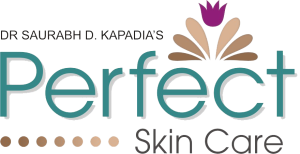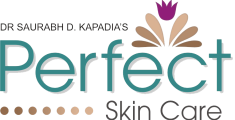Non-invasive techniques come in various types, so it is generally easy to tailor treatments to meet each patient’s unique needs, addressing issues such as fine lines, deep creases, thinning lips, facial volume loss, and other types.
Some important non-surgical facelift types are listed below:
Dermal Fillers:
As explained above, dermal fillers, a prime example of non-surgical facelifts. They are smooth gel injectables and can restore ‘lost volume’ along the cheeks, temples, lips, and under the eyes immediately after insertion.
What dermal fillers do is create youthful vibrancy by ‘plumping up’ sunken areas and eliminating dark shadows. They can also create a smooth, wrinkle-free look when placed along the nasolabial folds (commonly known as ‘smile lines’ or ‘laugh lines’) or marionette lines (common wrinkles that appear around the mouth and chin with age).
Dermal fillers contain moisture-rich hyaluronic acid, among other ingredients. They hydrate the skin by holding water and acts as a cushion and lubricant to reduce damage to it. The plumping and smoothing properties of fillers can last from six months to over a year.
Thread Lift:
Another non-surgical facelift procedure is the thread lift. Here, the doctor inserts very fine, absorbable threads in the problematic areas of the face to give it a natural-looking lift. In a thread lift, the doctor doesn’t remove any of the loose skin, unlike in a surgical procedure.
The outcome is subtle, though quite distinct; it seems as if the skin is pulled back slightly, which has the effect of ‘lifting’ and tightening the face, making it look more youthful.
Apart from lifting the skin, threads trigger the body’s natural healing process and cause collagen to surge to the treated areas. This is important because collagen plays a vital role; it supports growth factors that significantly influence the condition of your skin.
Botox:
Botox is yet another critical component of the non-surgical facelift and is unmatched when it comes to smoothing wrinkles, forehead creases, frown lines, and ‘crow’s feet’. The procedure relaxes the targeted muscles temporarily, ‘ironing out’ facial lines that are usually the result of repetitive expressions such as smiling or laughing.
Botox does not remove wrinkles immediately, but you can see results in 1–2 weeks, which can last
Bottom of Form
Needleless Treatments
There are also non-surgical facelift procedures that skip the needle altogether. These ‘needleless’ treatments come in various types.
Laser Treatments
Laser treatments are yet another technique for a non-surgical facelift. The laser treatment takes less than an hour and improves the quality and glow of skin by tightening the pores.
Micro-needling Radiofrequency:
This is a popular treatment option which works on skin texture and refines the open pores. It needs up to four sessions that are two to four weeks apart. Sometimes, it is supplemented with cocktails of vitamin and antioxidants to maximise the benefits.
Carboxytherapy:
Carboxytherapy involves the diffusion of CO2 gas in the middle layer of the skin to create a state of hypoxia – reducing the oxygen supply in that area. This stimulates the brain to send more blood and nutrients to the treated area. This, in turn, leads to the formation of more collagen and the rejuvenation of the skin. Depending on the skin, this treatment may require one or more sessions per week for a few weeks
Cryolipolysis:
This is a freezing technique to dissolve the excess fat under the chin. It’s done before other procedures for a facelift to give the face a defined jawline and improve the lifting effect. The procedure requires one to two sessions, is painless and needs no downtime.
Chemical Peels:
A simple method for non-surgical facelifts is using advanced chemical peels. This is a trusted, non-invasive technique. Advanced chemical peels shrink large pores and improve overall skin quality.
HIFU Technology:
High-intensity Focused Ultrasound (HIFU) is the most advanced FDA approved technology. It stimulates the production of collagen by using ultrasound energy to result in firmer skin. It’s used the most for the treatment of double chin in addition to facelifts. Just one session is needed, which can be repeated annually, and there’s no downtime.
Usually, the cosmetologists use a combined approach to reach the best result possible considering the age, skin quality, general health status, and previous treatments done. The downtime and your budget are also considered while selecting the best possible treatment approach.



